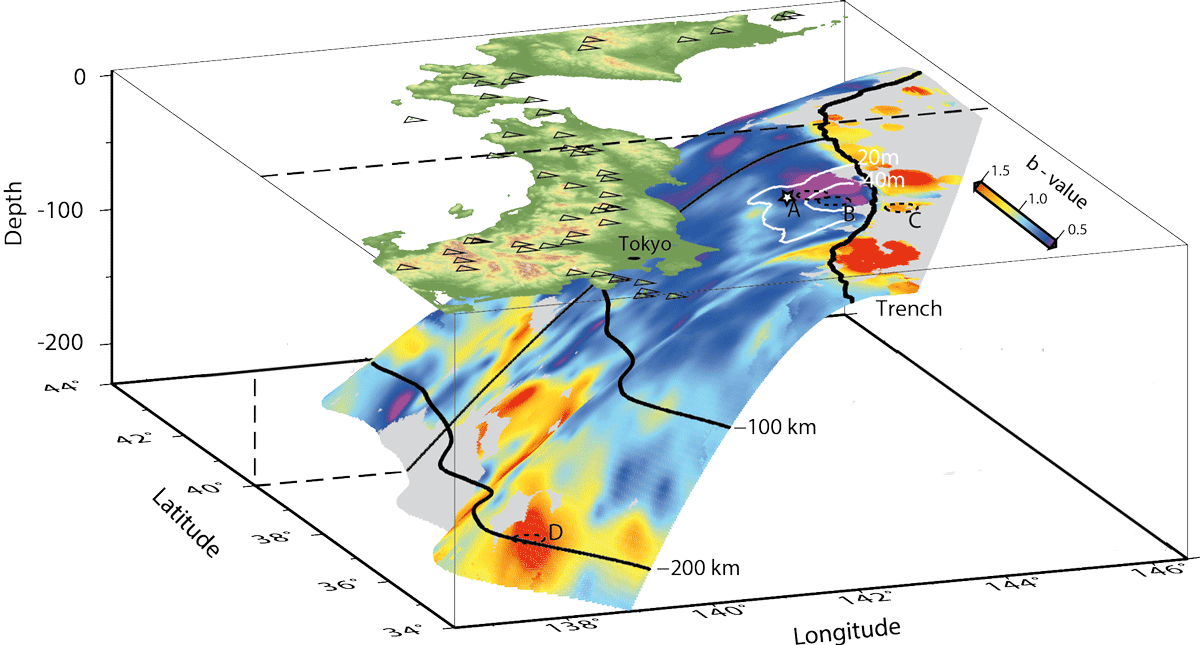2015-02-03
When Will the Next Major Earthquake Occur?
For the Japanese subduction zone, the answer is “at any time", as researchers from the Swiss Seismological Service (SED) argue in their article in Nature Geoscience, which was published today.
Read more...The research project focused on the following question: How quickly after a large-scale earthquake can a second earthquake occur? In the process of trying to answer this question, SED researcher Dr. Thessa Tormann, together with her colleagues from the SED and Tsukuba University in Japan, used statistical methods to analyze data from nearly one million smaller earthquakes. All of these earthquakes were recorded in the Japanese subduction zone before and after the Tōhoku earthquake on March 11, 2011, which had a magnitude of 9. The results of the research show that the fault returned to its original stress levels in a surprisingly short period of time, which indicates that a second earthquake could occur relatively quickly after a massive earthquake of that scale. Luckily, earthquakes of that magnitude tend to occur only once every few centuries on average; however, the results from the SED researchers show that there is no period of safety after a major earthquake.
Here is a link to the article "Randomness of megathrust earthquakes implied by rapid stress recovery after the Japan earthquake" (the full article is behind a paywall).
